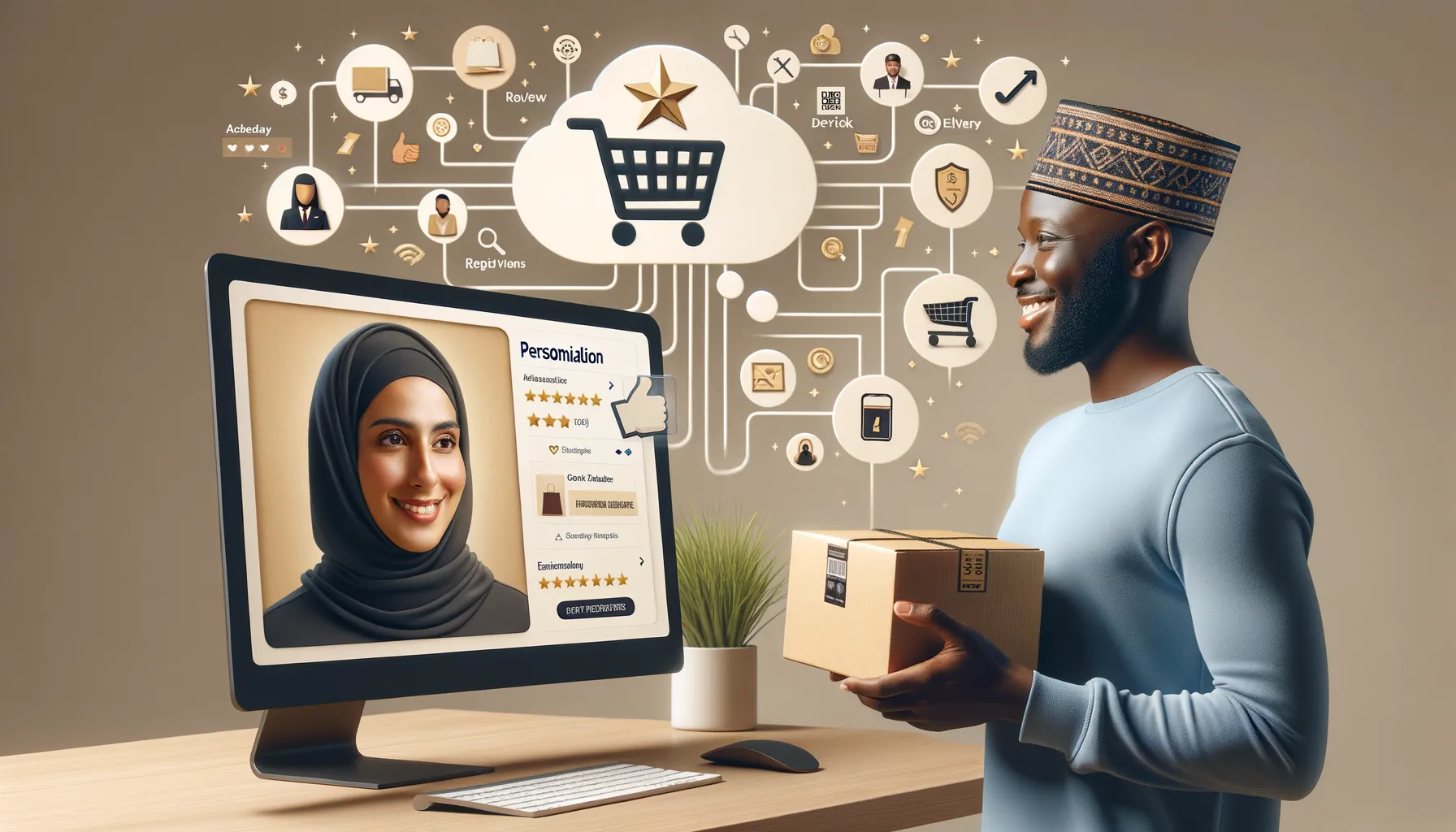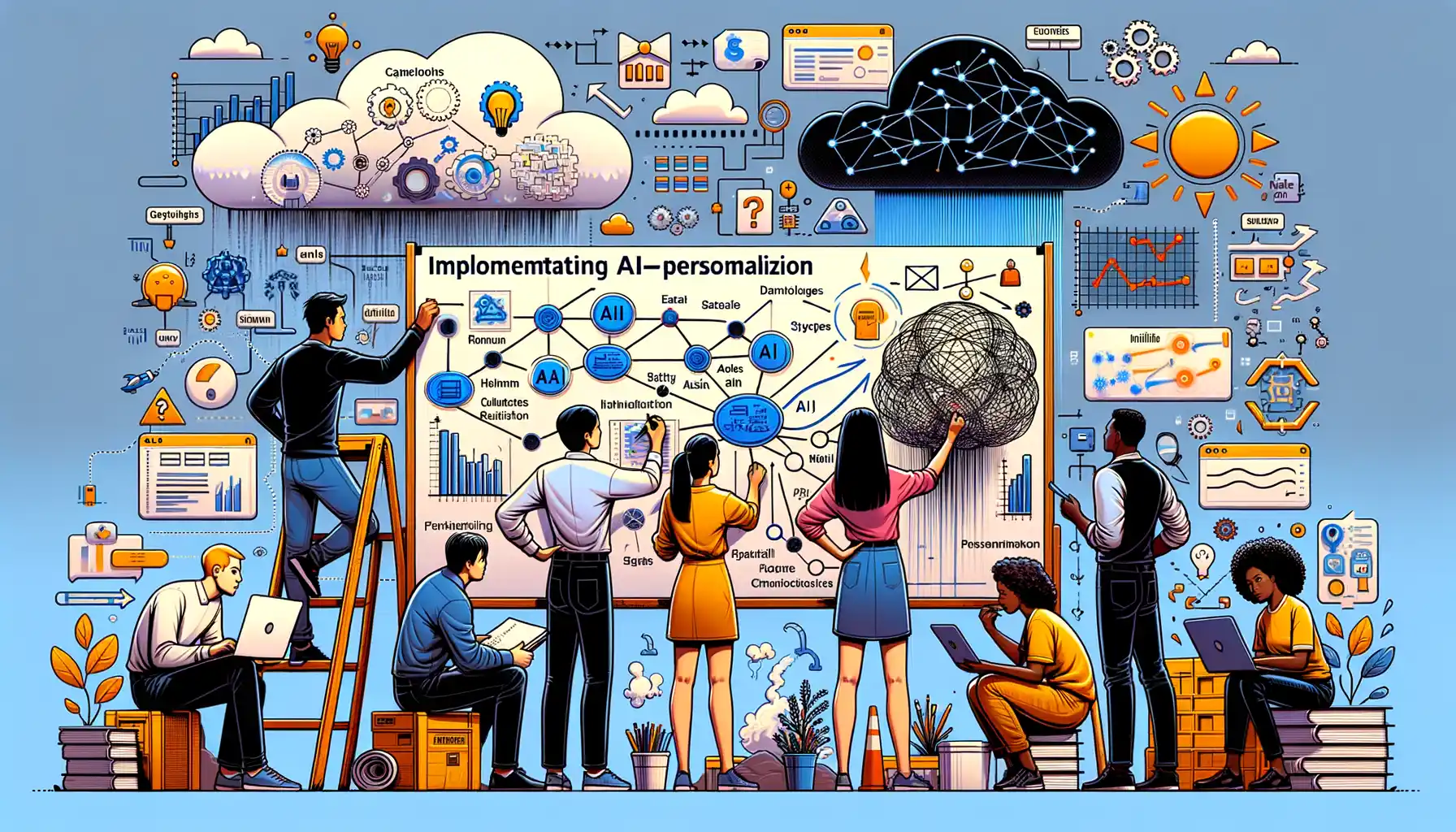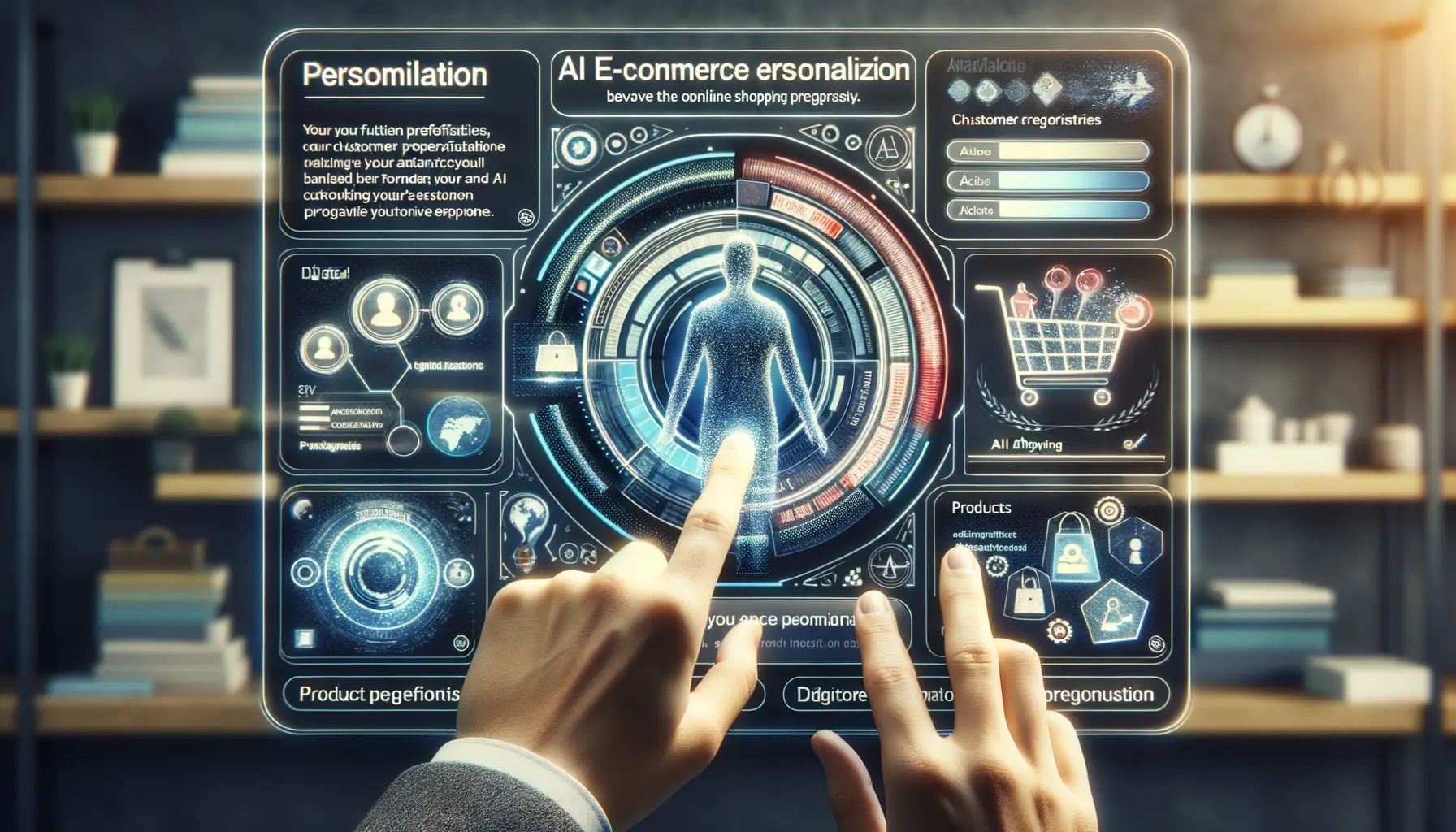Understanding the Role of AI in E-commerce Personalization
Why AI Is Your E-commerce Wingman
Picture this: you’re shopping online, hunting for the perfect pair of sneakers. Before you even realize what you’re looking for, the app has already served up recommendations that feel like they’ve read your mind. How does this magic happen? That’s where AI swoops in as the ultimate personalization guru.
E-commerce personalization isn’t just about suggesting products—it’s about creating a tailored journey. AI acts like the backstage genius, analyzing oceans of data to craft experiences so personalized, it’s like the store knows your favorite color, size, and style better than your best friend.
Here’s what AI is doing behind the curtain:
- Digging through purchase histories to predict what customers will love next.
- Tracking browsing habits to serve hyper-relevant product recommendations.
- Even optimizing layout and messaging based on individual preferences!
When someone gets a “Hey, you left this in your cart” email that somehow makes them smile instead of cringe, thank AI. It’s not just crunching numbers; it’s creating connections—ones that keep shoppers coming back for more.
The Secret Sauce: Data Meets Emotion
What sets AI apart from traditional algorithms? Its ability to merge hard data with human-like intuition. By tapping into real-time behavior, AI doesn’t just guess—it predicts. Imagine walking into a store and having a clerk introduce you to items that seem made for you, every time. That’s what AI brings to the e-commerce world.
It goes beyond product suggestions, too. Dynamic pricing adjusts offers based on demand and user interest. Chatbots powered by AI provide instant, conversational support that feels less like talking to a machine and more like getting help from a friendly expert.
E-commerce apps leveraging AI are essentially crafting individual shopping universes. And let’s be honest—who doesn’t want to feel like a VIP?
Key AI Techniques for Personalizing E-commerce Experiences

Unlocking the Magic of Recommendation Engines
Imagine walking into a store where an assistant knows *exactly* what you need, even before you ask. That’s what a well-tuned, AI-powered recommendation engine does for e-commerce shoppers. These systems analyze your browsing patterns, purchase history, and even what’s trending among similar consumers. Ever noticed how Netflix seems to know you better than your closest friend? The same principle applies here.
By using complex algorithms such as collaborative filtering or neural networks, e-commerce platforms can:
- Showcase “You may also like” product suggestions tailored just for you.
- Offer real-time recommendations based on your current clicks or search queries.
- Resurface forgotten items in your cart when you hesitate at checkout.
The beauty? Shoppers feel understood, not overwhelmed.
Dynamic Pricing: More Than Just Discounts
Have you ever wondered why flight prices seem to change faster than the weather? That’s the power of dynamic pricing, another AI-driven technique revolutionizing e-commerce. Using machine learning, apps assess demand, competition, and even time of day to create irresistible price offers. Think about it: If a retailer knows you’ve been eyeing a sweater all week, wouldn’t a time-sensitive discount feel like fate?
But it’s not just about deals. Dynamic pricing ensures fairness too—charging less during off-peak hours or targeting loyal customers with exclusive promotions. It’s about creating a personalized shopping journey that feels effortless yet perfectly planned.
Benefits of Personalized User Experiences in E-commerce

Creating Joyful and Intuitive Shopping Journeys
Imagine walking into your favorite boutique where the shop assistant greets you by name, knows exactly what you’re looking for, and even suggests items that match your style before you ask. That’s the magic of a personalized user experience in e-commerce. It feels like the app *gets you*—it speaks your language, understands your tastes, and makes shopping both seamless and exciting.
Personalization doesn’t just lead to happier customers; it builds trust. When an app remembers your past orders, celebrates your birthday with an exclusive discount, or curates a “top picks” page based on your browsing habits, it forges a deeper connection. It’s not just shopping anymore—it becomes a relationship.
- Higher conversion rates: Tailored product recommendations can nudge indecisive buyers toward saying “yes!”
- Effortless browsing: Why dig through hundreds of options when the app does the heavy lifting for you?
- Loyalty on autopilot: Customers are far more likely to return to a platform that feels tailor-made for them.
Turning Data Into Delight
At its core, personalization leverages rich data—browsing patterns, purchase history, even the time of day you like to shop—to craft a tailored experience. It’s like having a secret ingredient that turns a standard cookie into one sprinkled with your favorite chocolate chips. And here’s the kicker: shoppers don’t just enjoy this—they’ve come to expect it.
Consider streaming platforms recommending what to watch next. E-commerce is no different. When AI suggests complementary products (think: curated matching boots for that jacket in your cart), it’s not pushy—it’s helpful. In fact, your app might feel a little like that friend who says, “Oh, that bag would totally go with your outfit!”
Challenges in Implementing AI-driven Personalization

Tangled Wires: Common Struggles with AI Personalization
Crafting a seamless, AI-driven personalized experience for your e-commerce app isn’t always as shiny and straightforward as it looks on paper. Behind every tailored recommendation or perfectly timed notification lies a maze of challenges that can make even the savviest of businesses break a sweat.
One of the biggest hurdles is getting your hands on high-quality data. Sure, there’s a ton of data floating around, but not all of it is valuable. Imagine trying to build a recipe with half-scribbled instructions—frustrating, right? Without clean, structured, and relevant data points, AI models stumble.
Then there’s the elephant in the room: privacy concerns. Users love personalized experiences… until they feel like their shopping cart knows them better than their best friend. Balancing personalization and respecting user privacy is equivalent to walking a tightrope.
To top it off, implementing AI requires significant expertise. It’s not just plug-and-play. You need specialists to train models, integrate systems, and regularly fine-tune results. Oh, and let’s not overlook costs:
- Acquiring the technology (and talent) can be expensive.
- Maintaining these systems over time? Even pricier.
Stumble on any of these steps, and the dream of hyper-personalized shopping can feel out of reach. But, when executed well, the payoff is worth every challenge.
Future Trends in AI and E-commerce Personalization

How AI Will Shape Tomorrow’s Shopping Experience
The future of e-commerce is about to get surreal. Imagine walking into a virtual store where the shelves rearrange themselves just for you. That’s the level of hyper-personalization AI is steering us toward—tailored, intuitive, and almost eerily on point.
One exciting trend is the rise of predictive shopping experiences. With advanced algorithms, your favorite apps might soon know what you need before you even search for it. For instance, AI could suggest winter boots two weeks before snow is in the forecast or restock your pantry staples automatically. It’s shopping that reads your mind—or feels like it does.
- Augmented Reality (AR): Picture trying on clothes virtually while the AI refines suggestions based on what suits your skin tone and body type.
- Voice commerce evolution: Forget typing; conversational AI assistants will help you find the perfect product as if chatting with an old friend.
The Age of Context-Aware AI
AI is evolving beyond just “smart” to “empathetic.” Soon, your e-commerce app won’t just recommend products but will adapt to your mood. Feeling adventurous? Expect bold fashion choices. Cozy night in? Think fuzzy socks and hot chocolate kits. This shift to emotion-driven personalization will make online shopping feel more like a human connection.
